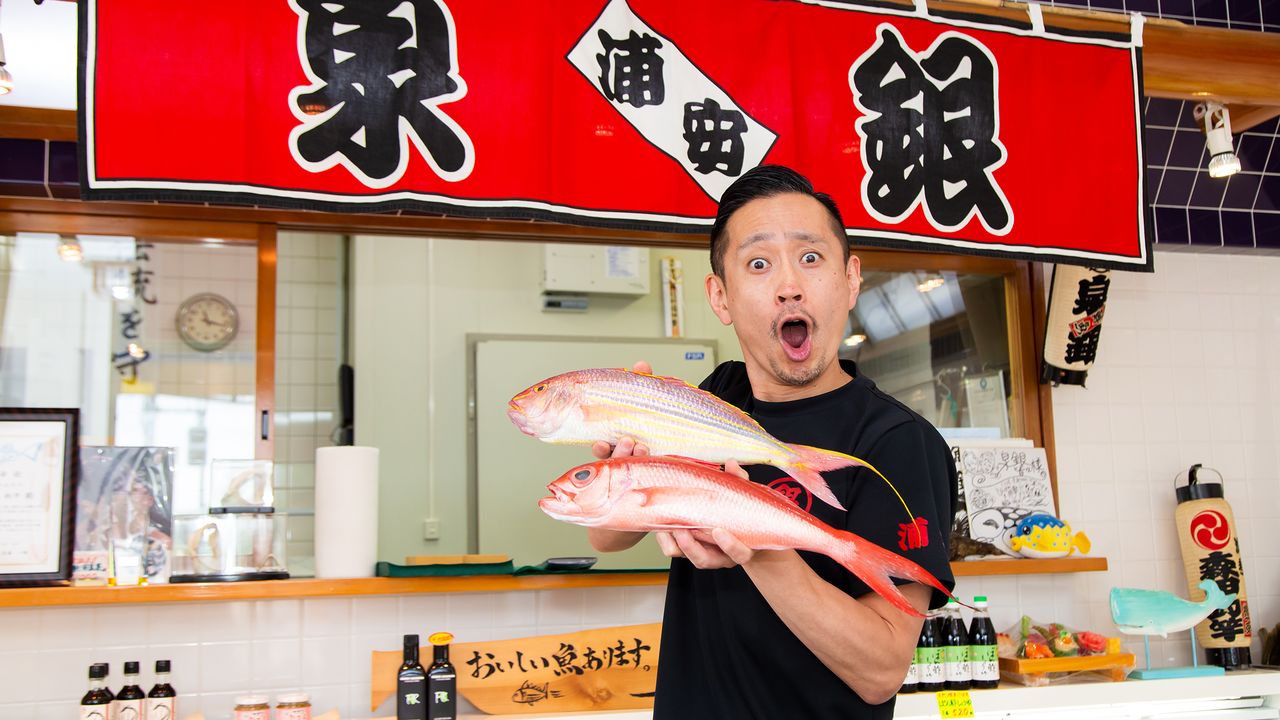
“Eat More Fish!”: Japan’s Rock-and-Roll Fishmonger Crusades for Traditional Mealtime Staple
Guideto Japan
Food and Drink Lifestyle- English
- 日本語
- 简体字
- 繁體字
- Français
- Español
- العربية
- Русский
Japan has one of the highest life expectancy rates in the world, and one reason for this is its seafood-rich diet. Seafood has been a major source of protein for the Japanese people for centuries. However, meat has since taken over as a culinary favorite. According to the Ministry of Agriculture, Forestry, and Fisheries, per capita fish consumption peaked at 40.2 kilograms in 2001, but was still far ahead of meat at 27.8 kilograms. Japanese preferences, particularly among young people, have since verged away from fish and other seafood, and in 2011, seafood consumption dropped below that of meat for the first time. By 2019, annual per capita seafood consumption had fallen to 23.8 kilograms, while meat increased to 33.5 kilograms. In addition to sluggish demand, catches of staple fish varieties like saury, salmon, and squid continue to decline, constituting a double whammy for the seafood industry. Once a major fishery nation, Japan is seeing a major transformation of its culinary culture.
One fishmonger in Chiba Prefecture is trying to reverse the tide with the passionate cry of “eat more fish!”
Songs of Fish and the Sea
Morita Tsurizao, the third-generation proprietor of Urayasu fish shop Izugin, is on a rock-and-roll mission. Going by his stage name—Tsurizao literally means “fishing rod”—he leads the musical group Gyokō (Fishing Port) that offers a new kind of music Morita calls “fish rock.” In 2004, the band made their debut on major label Universal Music with the song “Maguro” (Tuna).
Morita, who fellow members and fans call “Captain,” is the group’s vocalist and song writer. He pens tunes singing the praises of fish, the ocean, and fishermen. The group’s live performances are embellished with dramatic tuna-carving shows and other attractions to thrill fans and emphasize the band’s message: “Eat fish!”
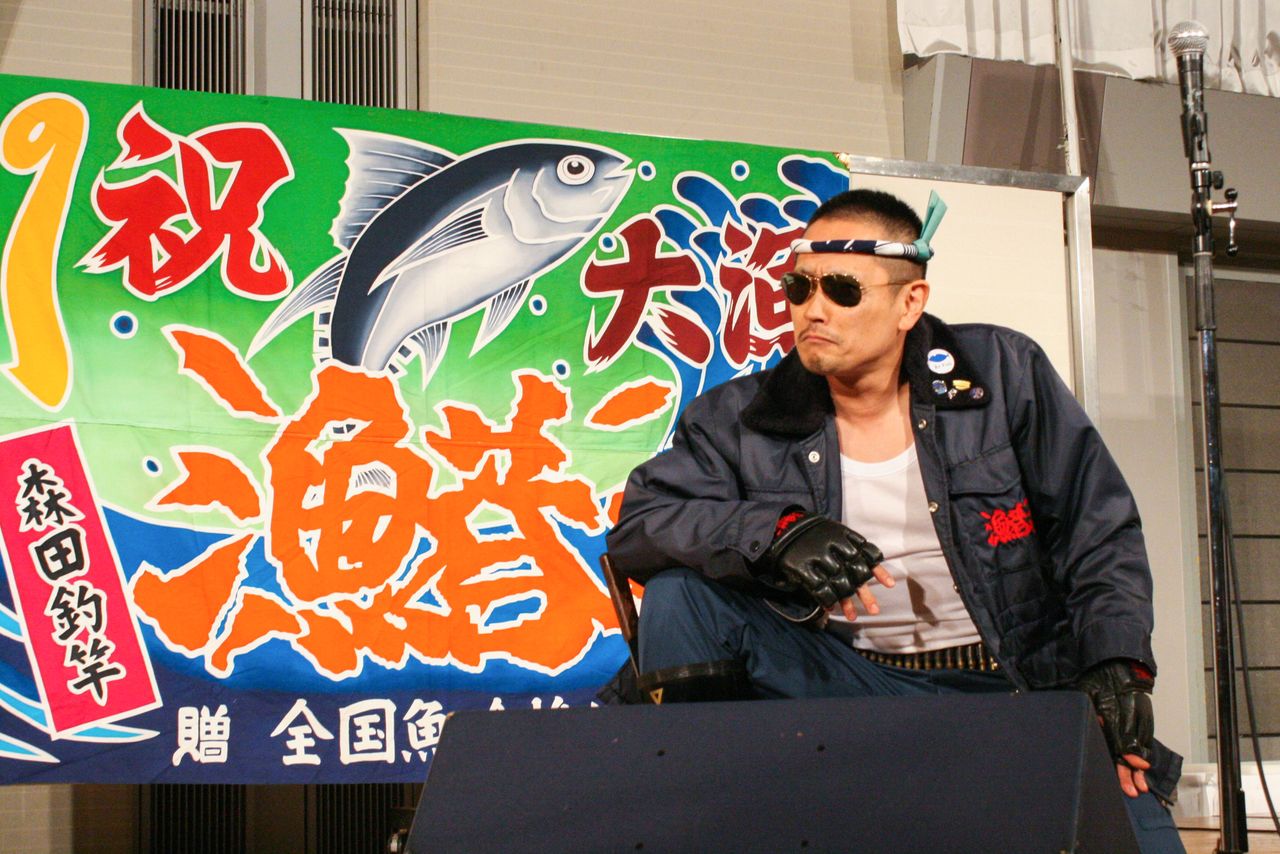
The “Captain” makes a guest appearance at a national gathering of fish sellers. (© Kawamoto Daigo)
When not on stage, Morita is selling fresh fish and other seafood at his store. He used to specialize in tuna and whale meat at the Urayasu Fish Market, but after the market closed, he opened shop in the Horie district of the city. He says selling fish is his true livelihood and passion and even confesses to turning down an invitation for his group to perform in New York, stating that “I just couldn’t keep the shop closed that long.”
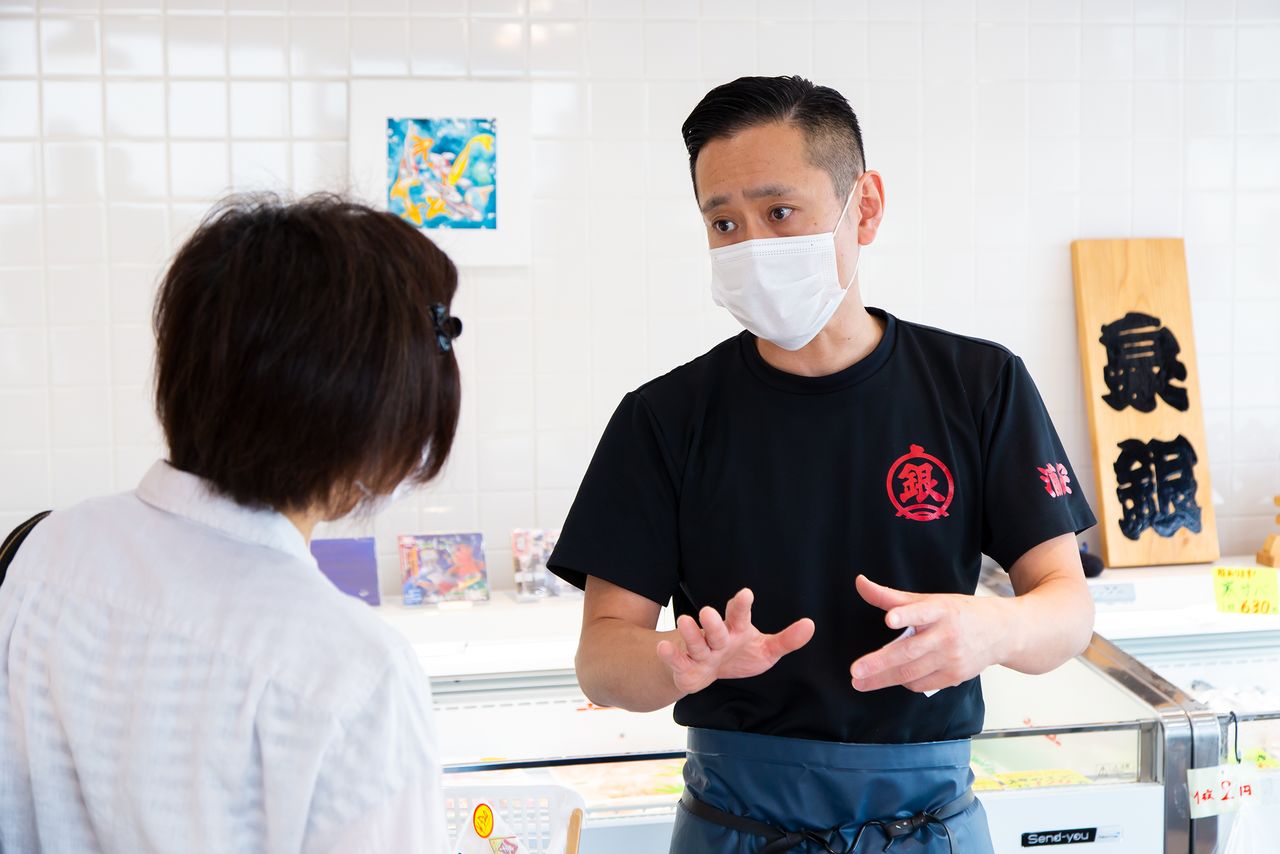
Morita explains to a customer how to prepare and cook the recommended fish of the day.
Reviving a Fishing Town
Not far from Izugin on the opposite side of the Sakai River is the neighborhood of Nekozane. The area’s reputation as a fishing town stretches back hundreds of years. Morita says that when he was a child, the riverbank was lined with fish shops, but that today the incursion of supermarkets and other changes have caused their numbers to dwindle.
“I was a second-grader when Tokyo Disneyland opened in Urayasu, altering the landscape completely,” Morita recalls “Convenience stores popped up here and there, and I remember being amazed that you could buy rice balls just about anywhere.” He notes that the popularity of fast food and items like instant cup noodles have drastically changed the Japanese diet, although he insists that this is a temporary state of affairs. “The Japanese preference for fish is something rooted in our very being. After all, this used to be a fishing town and people here used to eat a lot of fish.”

Izugin is located in a residential area, a 10-minute walk from the Urayasu Station on the Tokyo Metro Tōzai Line.
In the old days, fish shops were centers of community activity, serving as places for locals to share news or engage in casual chit-chat as they looked over the day’s catch. Morita is determined to revive that friendly atmosphere by making it a point to talk with his customers.
“The special you recommended the other day was delicious,” a customer tells him. “If you liked it,” responds Morita, his voice trained for singing clear and pleasant, “I suggest you try the matōdai [John dory] today. It can be eaten as sashimi and makes a great carpaccio. Leave the skin on the remaining half and sauté it with a meunière sauce. Delicious!”
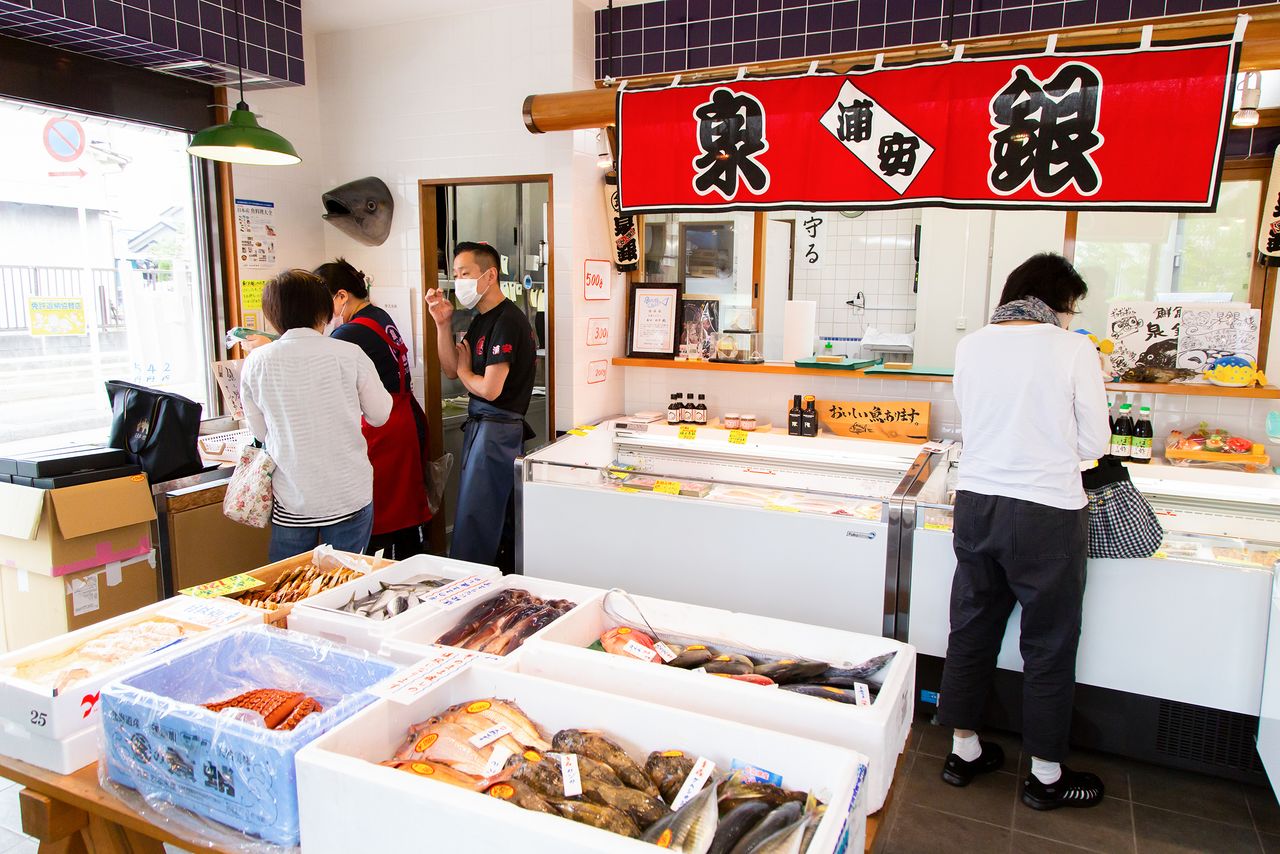
Not a few customers come to Morita’s shop just to enjoy the banter. The shop is busy from the moment it opens mid-morning.
Morita sources the wide assortment of fish and seafood he offers at Izugin through relatives and friends working in the Toyosu wholesale market in Tokyo. The store’s offerings are quite different from those of the average fish shop. “Knowing you’re eating a rare delicacy makes it all the more delicious,” Morita declares. Not only does Izugin offer a diverse variety of fish, but it also sells unusual items like juicy “cheek” meat, tail meat, skin, and even brains of tuna. And if you don’t know how to prepare such tasty morsels, Morita will teach you everything from arrangement to seasoning.
“Tuna brain is fatty and particularly tasty,” Morita says. “Cheek meat is also savory. And the tail meat is rich in collagen. Even the skin can be tasty if you prepare it well.” He recommends scalding pieces of skin in boiling water flavored with sake and ginger, scraping off the scales, letting the pieces cool, and then slicing them into fine strips. “Dribble on some ponzu, top with daikon radish grated with a little bit of chili pepper, drop on a few chopped chives, then add a dash of Tabasco to give it an extra zing.”
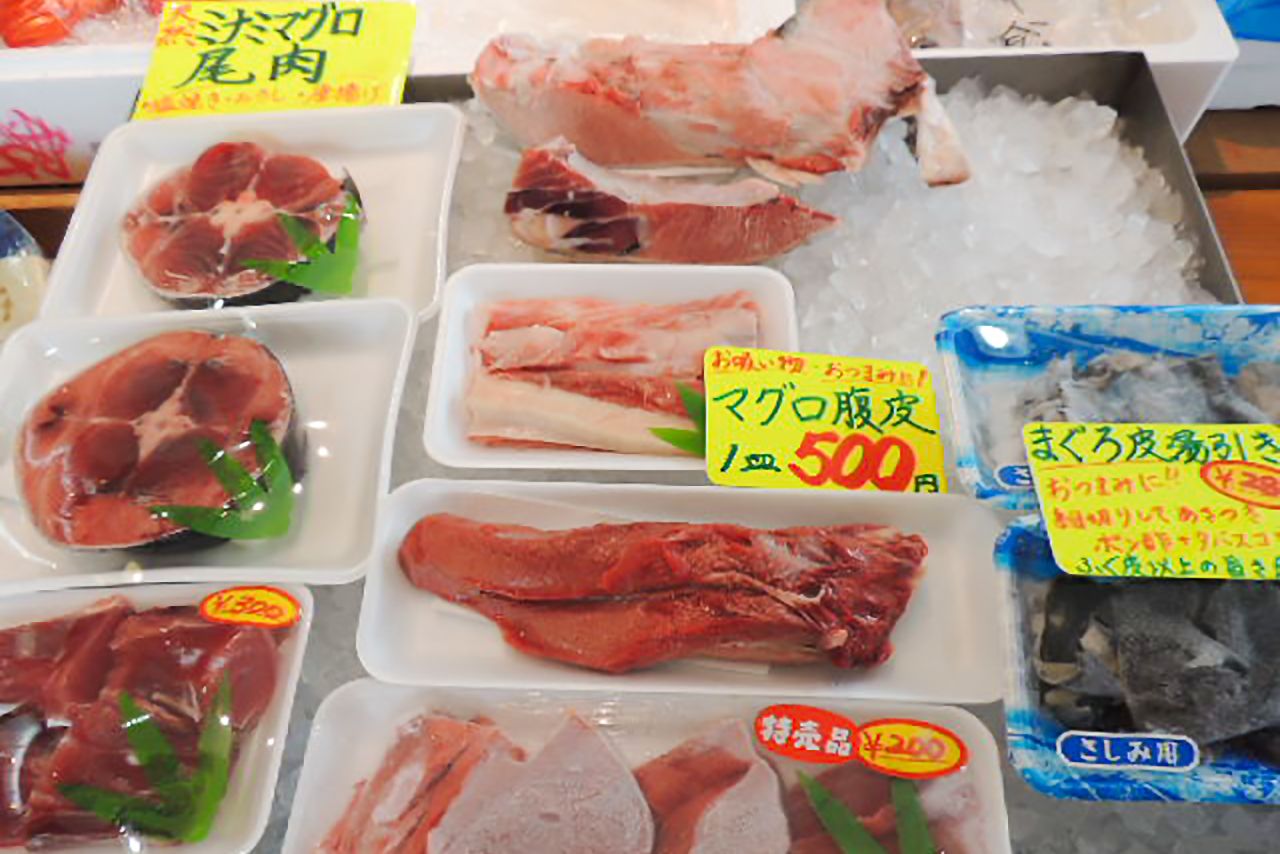
Izugin carries a variety of rare cuts of tuna not found in the seafood section of supermarkets. (© Kawamoto Daigo)
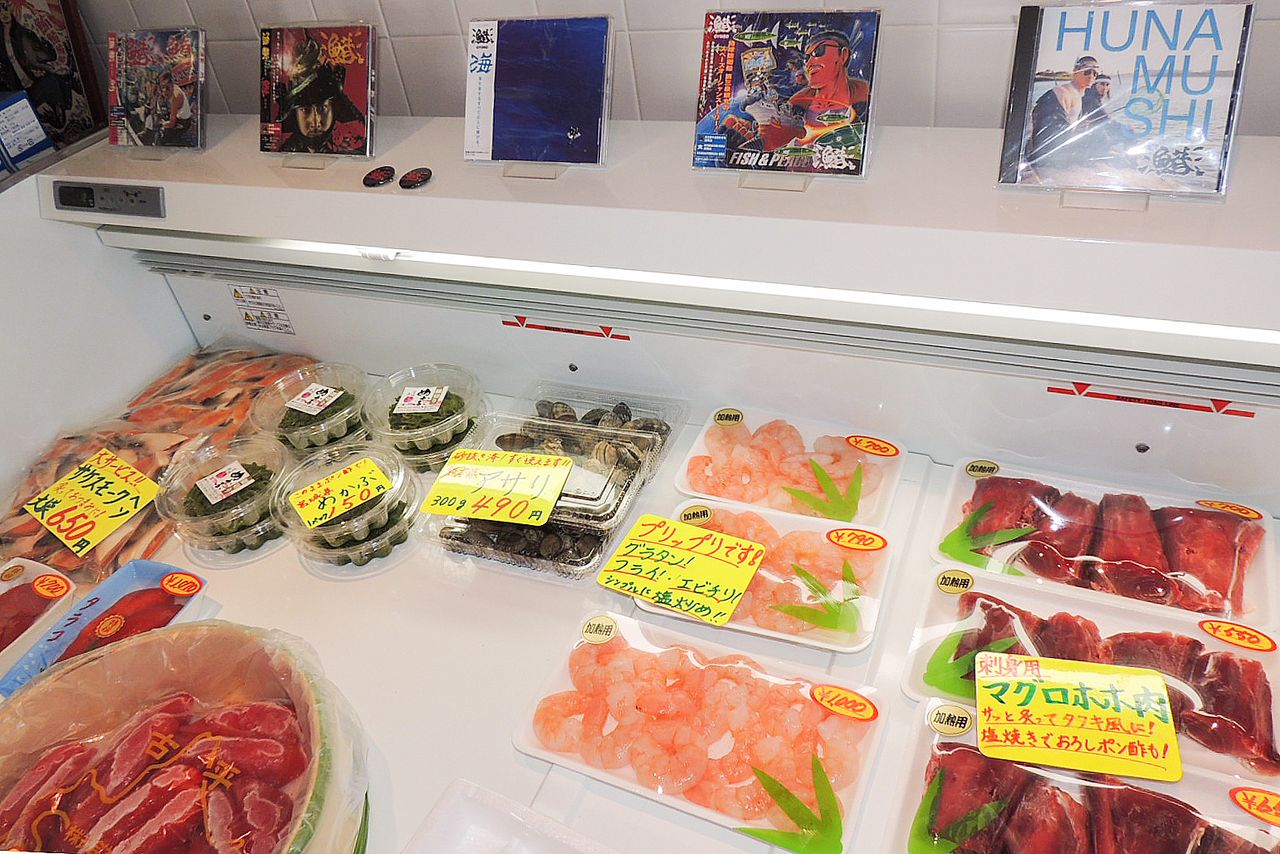
Gyokō CDs line the shelf over the refrigerated display case. (© Kawamoto Daigo)
Prepare Your Own Fish
Morita laments that people today are increasingly reluctant to fix fish at home due to the smell and bother involved. He points out that just about every part of a fish can be eaten, with the general exception of the head and bones, and encourages customers to buy a whole specimen and prepare it themselves.
“I can sell seafood cheaper that way,” he exclaims. “And fresh fish that you’ve fixed yourself is always the best. I want my customers to have a sense of gratitude for the fish that gave its life to fill their bellies. There are so many delicious ways to prepare fish, and I consider it my mission to teach my customers the best ways of doing it.”
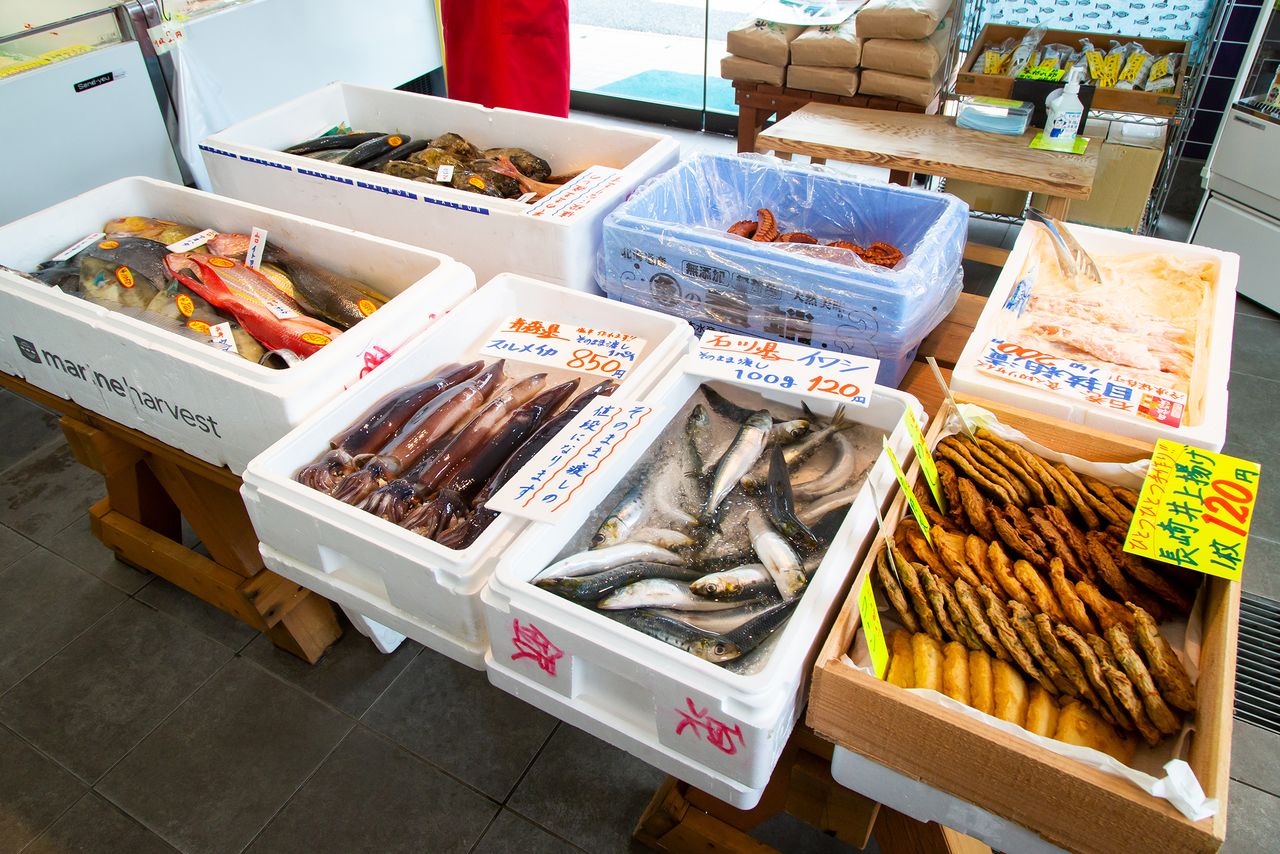
Most of the seafood at Izugin is sold whole.
Morita’s resolve has only been reinforced by the current coronavirus pandemic. People are eating at home more, but other than packages of sliced horse mackerel, yellowtail, and red snapper that are the primary offerings at major supermarkets, the Toyosu wholesalers are finding it hard to sell the rest of their stock. Izugin has made it a point to buy up what it can. With so many varieties available, Morita says he does not have the time to cut and sell slices, so he hawks the fish he has whole. This approach has actually improved business as repeat customers come in with glowing reports about their delicious adventures of preparing seafood themselves.
The approach requires Morita to temper his zeal, though. “You can’t force people, because if you’re too pushy, they won’t come back.” He gladly fillets fish for customer who asks, making certain to show them step by step how it is done. Morita’s service and willingness to teach attracts as many as 200 customers a day to the small, unassuming shop. On Saturdays, in particular, the store draws customers from neighboring prefectures, and even further away.
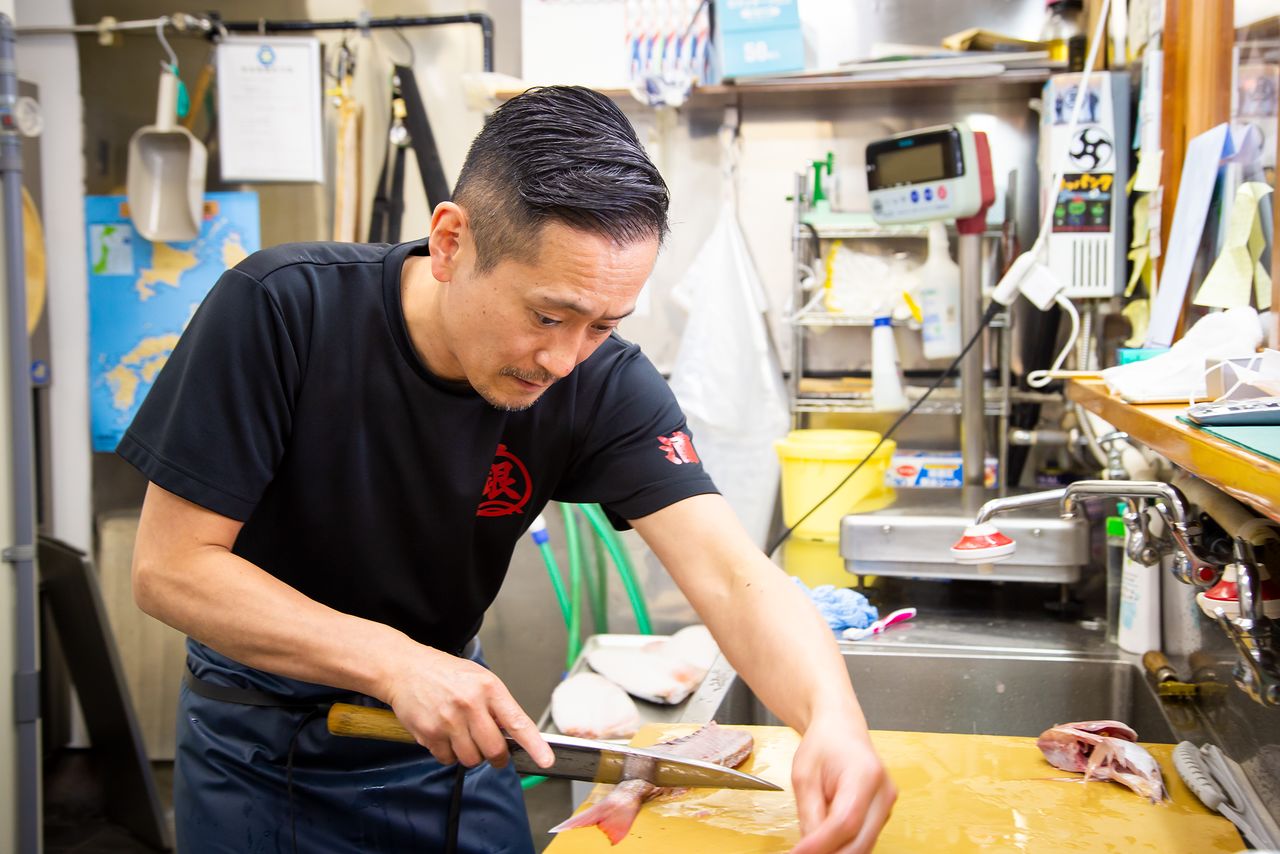
Morita fillets a red snapper. He is always willing to teach customers how to prepare fish.
Working to Revive Japan’s Traditional Fish Cuisine
Some in the Japanese fisheries industry see Morita with his ambitious dual career of rock-and-roller and fishmonger as a savior. In 2021 the Japan Fisheries Association awarded Morita with a certificate of appreciation for his efforts to encourage fish consumption, and in 2016, he was appointed by the Fisheries Agency to be an osakana kataribe, a kind of seafood ambassador. Morita also serves as a special lecturer at the Tokyo University of Marine Science and Technology, teaching students who will become future leaders of Japan’s marine industry how to prepare and cook fish. He can also be found performing with his musical group at the school’s annual campus festival.
Morita is passionate about his mission. “I’m not telling people to stop eating meat. I enjoy eating steak, hamburgers, and fried chicken as much as anyone else. Still, fish offer so much variety and have different seasons. There are so many delicious kinds of fish dishes. By teaching people how best to eat seafood, I want to revive Japan’s status as a world leader in fish cuisine.”
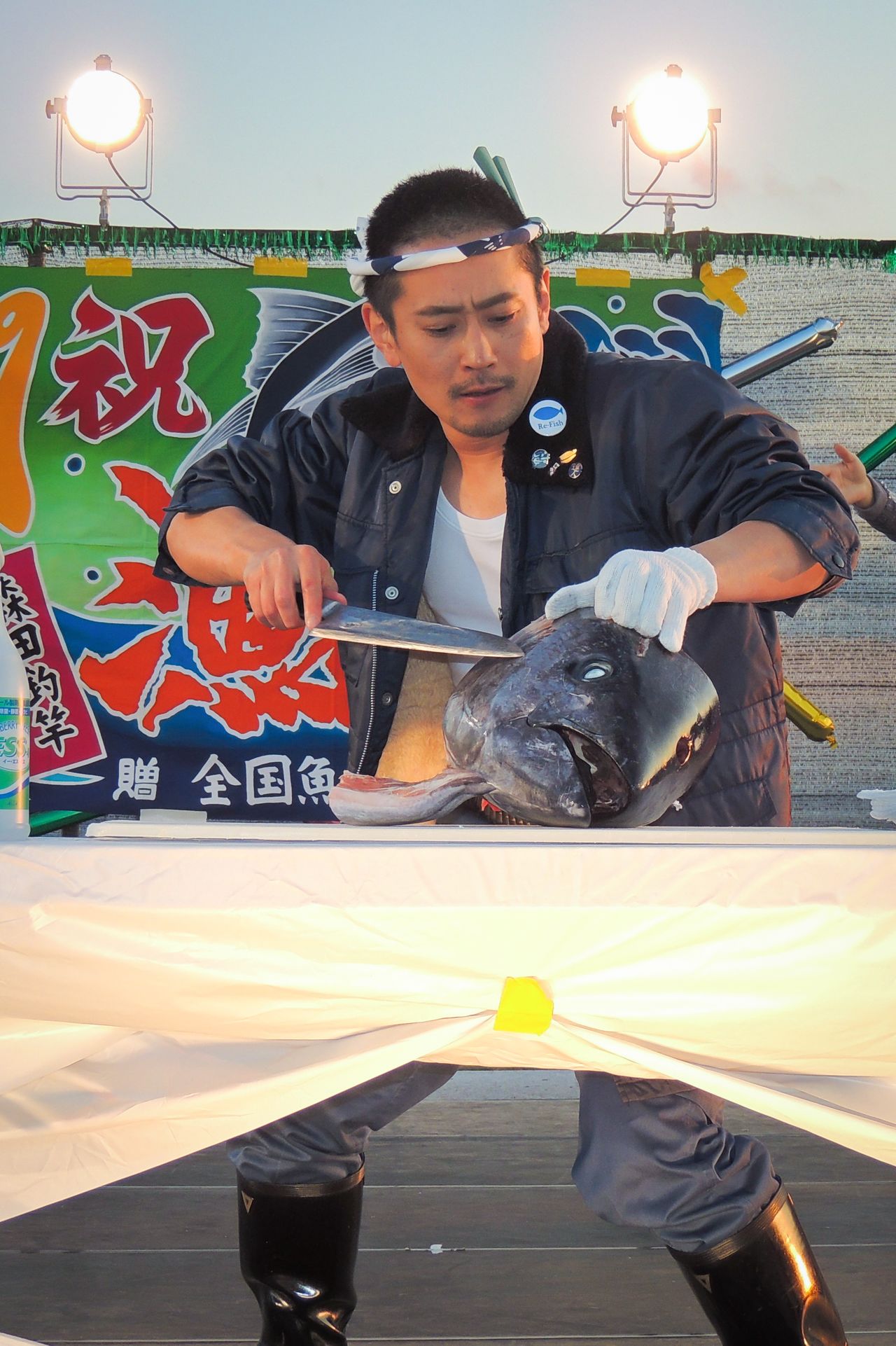
Cutting out a savory delicacy in a demonstration of tuna-carving at a musical event. Morita and his group have put on a similar performance at the famed Budōkan in Tokyo, Japan’s rock music mecca. (© Kawamoto Daigo)
Fresh Fish Izugin
- Address: Horie 3-25-1, Urayasu, Chiba Prefecture
- Hours: Weekdays, 11:00 am to 5:30 pm; Saturdays, 8:00 am to 5:30 pm; Sundays, 8:00 am to 2:00 pm
- Closed: Wednesdays and Thursdays
(Originally published in Japanese. Photos by Nippon.com unless otherwise noted.)